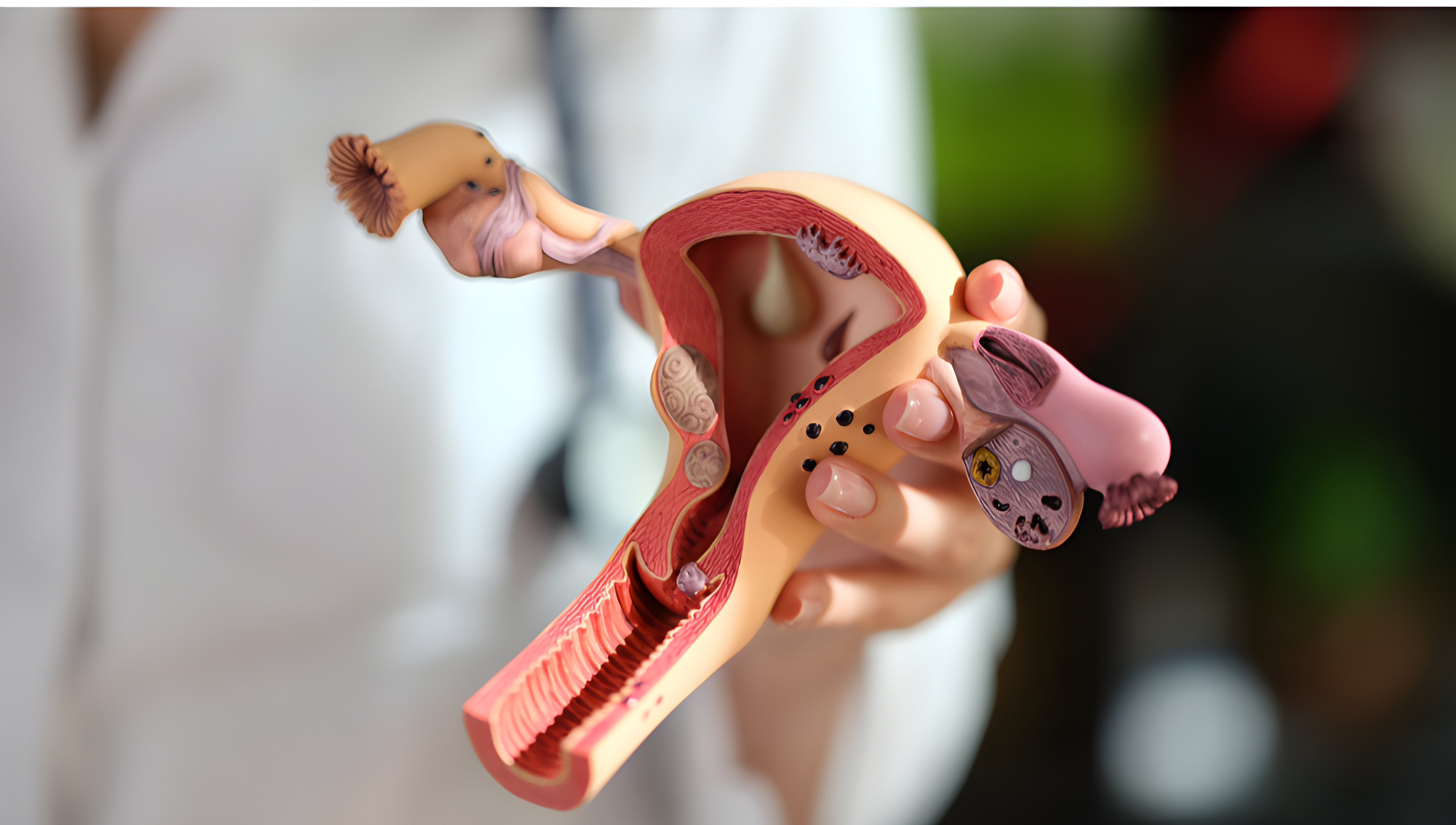AMH, or Anti-Müllerian Hormone, is an indicator of an individual's ovarian reserve.
Every woman is born with a certain number of eggs. During puberty, the ovaries contain approximately 300,000-500,000 follicles. With each menstrual cycle, this number declines. By around 30-35 years of age, most women still have a sufficient number of eggs capable of fertilization. After 35 years, the ovarian reserve declines rapidly, and by menopause, the egg reserve is completely depleted. The timing of menopause is individual and depends on the initial reserve of eggs and the rate of their loss.
It is important to note that a low AMH level can be observed even in women in their twenties.
Ovarian reserve is the number of follicles in the ovaries that are potentially capable of producing eggs. Each month, in the natural cycle, 10-20 follicles mature, but only one dominant follicle reaches ovulation, while the others perish. During ovulation, a mature egg is released from the follicle and moves into the fallopian tube, where it is ready for fertilization within 12-24 hours. If fertilization does not occur during this period, the egg degenerates.
Factors Affecting AMH Levels
Various factors can affect AMH levels; here are the most common:
|
Factor |
Description |
|
Age of the woman |
AMH levels naturally decline with age. After reaching 30-35 years old, AMH levels may be quite low and impact fertility. |
|
Medical conditions |
Certain medical conditions, such as polycystic ovary syndrome (PCOS), premature ovarian failure (POF), endometriosis, undergoing chemotherapy, can trigger a premature decline in AMH levels. |
|
Surgical interventions |
Ovarian surgeries, such as ovarian cyst removal, can damage the ovaries and lead to decreased AMH levels. |
|
Diet and lifestyle |
Poor diet, obesity, smoking, and excessive stress can contribute to an early decline in AMH levels. |
|
Genetics |
In some cases, low AMH levels may be genetic. |
Determining AMH Levels
The best way to find out your AMH level is to take an Anti-Müllerian Hormone (AMH) test. This test measures the level of this hormone in the blood, allowing the estimation of the number of eggs remaining in a woman's ovaries that are theoretically capable of fertilization. It is a simple and easy blood test that can be taken on any day of the menstrual cycle.
The results of the AMH test give the physician a means to assess the condition of the woman's ovaries. This is crucial information that helps determine how many eggs you have left and how actively your ovaries are functioning.

Analyzing Test Results
Knowing your AMH level provides access to the following information:
|
Benefits |
Description |
|
Objective fertility assessment |
AMH levels give an indication of your chances for natural conception or the effectiveness of in vitro fertilization (IVF) procedures. |
|
Treatment planning |
Knowing your AMH level, the doctor can choose the most effective ovarian stimulation protocol for IVF, tailored to your specific case. |
|
Predicting response to stimulation |
AMH levels help predict how your ovaries will respond to stimulation medications. |
An AMH test in combination with an ovarian ultrasound is a crucial tool for diagnosis and treatment planning in reproductive medicine.
Normal AMH Levels
AMH levels decline with a woman's age. These are the general ranges:
- Normal level: 2.0 ng/ml to 5.0 ng/ml.
- Low: less than 2.0 ng/ml - 1.0 ng/ml.
- Very low: less than 1.0 ng/ml - 0.5 ng/ml.

Pregnancy Possibility with Low AMH Levels
Physicians have determined that women with low AMH levels have about a 5-7% probability of conceiving naturally. Yes, there are chances, but it can be extremely challenging.
If pregnancy does not occur after a year of active attempts, the solution may be the use of assisted reproductive technologies, such as IVF.
Delay in consulting a doctor is not recommended, as the ovarian reserve continues to decline every month, as does the chance of conception.
IVF provides the possibility for a woman to conceive even with very low AMH levels, with success depending on the treatment protocol selected for the patient.
The most important understanding is that the quality of the eggs is more important than their quantity. Even a single high-quality egg can offer a chance for successful fertilization and pregnancy.
How to Increase Success Chances of IVF with Low AMH?
Unfortunately, it is impossible to increase the egg reserve in the ovaries, so the treatment for low AMH is usually aimed at addressing the underlying cause of premature decline and improving ovarian function.
Here are some key points to increase the chances of pregnancy with low AMH:
|
Method |
Description |
|
Consultation with a reproductive specialist |
An experienced doctor can help develop an individualized stimulation protocol, using higher doses of medication or longer stimulation to optimize follicle development. |
|
Choosing the right clinic |
Selecting a reproductive clinic with experience in treating low AMH levels can be a crucial factor for success in the assisted reproduction program. |
|
IVF |
With low AMH levels, the use of assisted reproductive technologies with the development of individualized treatment protocols significantly increases the chances of pregnancy. It is important to follow the doctor's recommendations closely. |
|
Lifestyle changes |
Adhering to a balanced diet, regular physical exercise, quitting smoking, and reducing stress can positively impact fertility. |
|
Preimplantation genetic testing (PGT) |
This helps check embryos for chromosomal abnormalities, increasing the likelihood of implantation and reducing the risk of miscarriage. |
|
IVF with donor eggs |
In some cases, with critically low AMH levels combined with poor quality of own eggs, donor eggs from young, healthy women are the only chance for successful fertilization and implantation. |
|
Surgery |
As ovarian function deteriorates due to pathologies such as tumors and cysts, surgical removal is necessary. |









